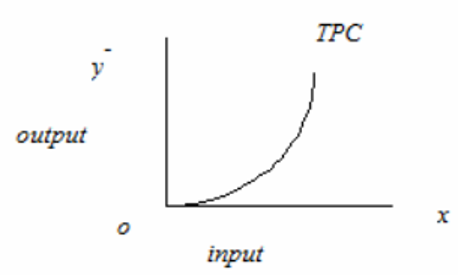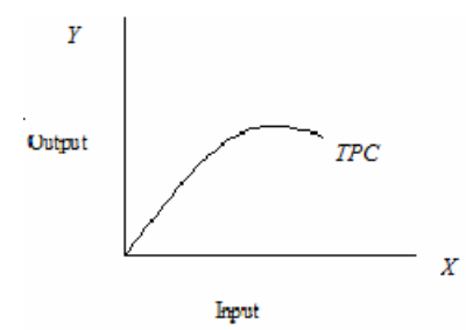🏦 Production Economics
Learn basics of Production Economics
Agricultural Production Economics
- Agricultural production economics is a field of specialization within the subject of agricultural economics.
- It is concerned with the choice of production patterns and resource use in order to maximize the objective function of farmers, their families, the society or the nation within a framework of limited resources.
- Production economics is concerned with two broad categories of decisions in the production process.
- How to organize resources in order to maximize the production of a single commodity? i.e. Choice making among various alternative ways of using resources.
- What combination of different commodities to produce?
Goals of Production Economics
- To provide guidance to individual farmers in using their resources most efficiently.
- To facilitate the most efficient use of resources from the stand point of economy.
Definition
- Agricultural Production Economics is an applied field of science wherein the
principles of choiceare applied to the use of capital, labour, land and management resources in the farming industry.
Subject matter of Agricultural Production Economics
- With a view to optimizing the use of farm resources on an individual farm level and to rationalize the use of resources from a national angle, production economics involves analysis of relationships and principles of rational decisions.
- Production Economics is concerned with productivity i.e. use and incomes from productive inputs (land, labour, capital and management). As a study of resource productivity, it deals with
- Resource use efficiency
- Resource combination
- Resource allocation
- Resource management
- Resource administration
- The subject matter of Production Economics includes such topics as methods or techniques of production, combination of enterprises, size of the farm, return to scale, leasing, production possibilities, farming efficiency, soil conservation, use of credit and capital, risks and uncertainty which effect decision making.
- Any agricultural problem that falls under the scope of resource allocation and marginal productivity analysis is the subject matter of the production economics. The production economist is therefore, concerned with any phenomena which have a bearing on economic efficiency in the use of agricultural resources.
Objectives
👉🏻 The main objectives of Agricultural production economics are:
- To determine and define the conditions which provide for optimum use of resources.
- To determine the extent to which the existing use of resources deviates from the optimum use.
- To analyze the factors or forces which are responsible for the existing production pattern and resource use and
- To explain means and methods for changing existing use of resources to the optimum level.
Basic production problems
👉🏻 The producer or manager is faced with five basic production problems on which they have to make decisions.
-
What to produce? This problem involves selecting the combination of crops and livestock enterprises to be produced. Should the business produce only crops, only livestock or some combination? Which crop or rotations? Which livestock? The farmer must select from among many alternatives that combination which will maximize profits.
-
How to produce? Many agricultural products can be produced in a number of ways. Crops can be produced with more capital and less labour (capital intensive technology) or more labour and less capital (labour intensive technology). A manager must select the appropriate combination of inputs which will minimize the cost of producing a given quantity of some commodity.
-
How much to produce? The level of production and profit will be determined by the input levels selected. A manager is faced with the problems of how much fertilizer and irrigation water to use, seed rates, feeding levels, labour and machinery use etc.
-
When to buy and sell? The seasonality of supply conditions in factor and product market results in variations in the prices. The manager must consider these things in determining when to sell or buy.
-
Where to buy and sell? Farmers generally purchase a number of inputs for a production. Attempt is always to purchase at the least cost. The producer must decide whether to sell in the village market or in the regulated market or other alternative market.
Laws of Returns
- Production is the result of cooperative working of various factors of production viz., land, labour, capital and management. The laws of returns operate on account of variability in the proportion in which the various factors can be combined for the purpose of production.
- In the production of a commodity where one input is varied, keeping all inputs fixed, the nature of relationship between single variable input and output can be either of the one or a combination of the following:
- Law of increasing returns
- Law of constant returns
- Law of decreasing returns
Law of increasing returns (Increasing marginal productivity)
- Each successive unit of variable input when applied to the fixed factor adds more and more to the total product than the previous unit.
- The marginal physical product is increasing and hence known as law of increasing returns.
- Increasing returns means lower costs per unit of output. Thus, the law of increasing returns signifies that cost per unit of additional product falls as more and more output is produced. Hence law of increasing returns also called
law of decreasing costs.

- As shown in the above table, the first unit of variable input adds 2 units, while the second add 4 units to the total output, the third add 6 units and so on. ⧡

- When production function is graphed with output on vertical axis and input on horizontal axis, the resulting curve is
convexto the origin. - Algebraically increasing returns is expressed as:

Law of constant returns (constant marginal productivity)
- Each additional unit of variable input when applied to the fixed factors produces an equal amount of additional product. The amount of product (TPP) increases by the same magnitude for each additional unit of input.
- The marginal physical product remains the same for each additional unit of input and hence it is called
law of constant marginal productivity. - Regardless of the scale of production, the cost of additional unit of product remains the same and hence it is also called
law of constant costs. Linear production function or constant returns is not a common relationship in agriculture.

-
As shown in the table, each unit of input adds 10 units. The shape of the total product curve is linear. Linear production indicates constant returns.

-
Algebraically increasing returns is expressed as:

Law of Decreasing returns (Decreasing marginal productivity)
- Each additional unit of variable input when applied to the fixed factors adds less and less to the total product than the previous unit.
- The marginal physical product is declining, hence the name law of decreasing returns.

- As shown in the table, the first unit of input adds 25 units, the second adds 20 units and the third adds 15 units and so on.
- The production function which exhibits diminishing returns is
concaveto the origin. Law of diminishing returns isvery common in agriculture.

- The cost of each additional unit of output increases as we produce more and more output and hence it is called
Law of increasing costs. - Algebraically, it can be expressed as

Basic Production Relationships
- Production of farm commodities involves numerous relationships between resources and products. Some of these relationships are simple, others are complex. Knowledge of these relationships is essential as they provide the tools by means of which the problems of production or resource use can be analyzed.
- Major production relationships are:
- Factor-Product relationship
- Factor-Factor relationship
- Product-Product relationship

Agricultural Production Economics
- Agricultural production economics is a field of specialization within the subject of agricultural economics.
- It is concerned with the choice of production patterns and resource use in order to maximize the objective function of farmers, their families, the society or the nation within a framework of limited resources.
- Production economics is concerned with two broad categories of decisions in the production process.
- How to organize resources in order to maximize the production of a single commodity? i.e. Choice making among various alternative ways of using resources.
- What combination of different commodities to produce?
Goals of Production Economics
- To provide guidance to individual farmers in using their resources most efficiently.
- To facilitate …
Become Successful With AgriDots
Learn the essential skills for getting a seat in the Exam with
🦄 You are a pro member!
Only use this page if purchasing a gift or enterprise account
Plan
- Unlimited access to PRO courses
- Quizzes with hand-picked meme prizes
- Invite to private Discord chat
- Free Sticker emailed
Lifetime
- All PRO-tier benefits
- Single payment, lifetime access
- 4,200 bonus xp points
- Next Level
T-shirt shipped worldwide

Yo! You just found a 20% discount using 👉 EASTEREGG

High-quality fitted cotton shirt produced by Next Level Apparel